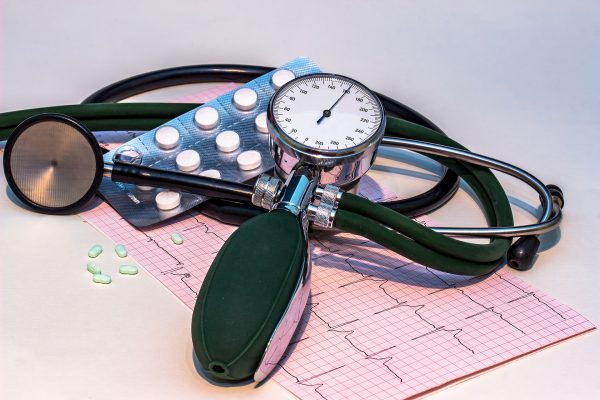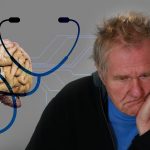High blood pressure is subtle. You can’t see it. You can’t feel it. You can’t hear it.
It can quietly damage the body for years before symptoms start showing. And the harm it can do to your health is incredible. Heart attack, stroke, dementia, kidney damage and even sexual dysfunction.
But what really causes high hypertension?
It’s not just one thing, that’s for sure.
Excess weight is one of the big causes of high blood pressure. For every pound of fat that you gain – or that your body thinks it should have – you have to make a mile of blood vessels to feed it.
Now your heart? It’s a pump. And when it has to pump against more vascular highway, the pressure has to be high enough to do it. So your blood pressure goes up.
And then there’s your sodium and potassium levels.
When your sodium to potassium ratio is out of whack, that will affect your blood pressure. It’s common knowledge that sodium contributes to high blood pressure. What is not so well known is that potassium is even more important than sodium, because it works to lower sodium levels. So your sodium/potassium ratio is important.
The problem is that, on average, Americans consume about 3,400 mg of sodium daily and only about 2,640 mg of potassium each day.
Ideally, you should get 2 mg of potassium for every 1 mg of sodium you eat.
Chronic inflammation is another big contributor to hypertension. And it can be triggered by so many things – the foods you eat, chronic stress, environmental pollutants and more. It’s often a low-grade form of inflammation that you’re not even aware of.
There are any number of other reasons for high blood pressure, but these are some of the ones that you can exert the most control over.
How to Take Your Blood Pressure at Home
If you have borderline hypertension, you need to take action. The good news is that, unless there is some type of underlying condition – such as heavy metal poisoning or an autoimmune reaction – you can reverse it without medical intervention.
This same advice applies even if you’re already on anti-hypertension medications. With the right changes, you can eventually get off of those meds. (After all, nobody really wants to take blood pressure drugs for the rest of their lives, do they?)
The first thing you should do is start keeping track of your blood pressure. Through the years I’ve noticed some patients get nervous at the doctor’s office. They’ve got “white coat syndrome.” That can cause a high reading. So it’s always a good idea to see what your blood pressure is under normal circumstances.
You need to take the reading on your left arm. The cuff should be placed between your shoulder and the bend in your elbow. It should fall about 6 inches below your shoulder and be at the height of your heart. This way the pressure doesn’t have to pump uphill when you take the diagnostic.
Make sure you’re relaxed and sitting upright with your feet flat on the floor before taking it. At least 5 minutes in this relaxed position is the best.
Write down you’re reading each morning, then again in the afternoon.
Next, get started on making some all-important changes.
Four Ways to Take Control of Your Blood Pressure
First of all, you absolutely must move your body! The more active you are, the more it will encourage blood flow. Your blood pressure will drop, and your heart will pump more efficiently. You’ll also start dropping excess pounds.
Second, eat well. Those foods that come in packages aren’t “real” food. They aren’t what your body needs to thrive. Choose natural, organic fruits and vegetables whenever you can, from all colors of the rainbow. Include plenty of potassium rich foods like bananas, spinach, beans, artichoke and sweet potatoes. The more variety you get, the faster you’ll lose weight and regain a healthy blood pressure.
Third, de-stress. Stress is a big contributor to high blood pressure. Deep breathing exercises, meditation and getting a good night’s sleep are three things you can immediately start doing to help reduce your stress levels. I’ve seen many patients get great results with mind-body programs like yoga, tai chi or qi gong. Acupuncture and massage therapy are also great stress relievers.
Last but not least, sleep well. Each evening, I turn the lights down to simulate sunset. Then, I’ll take a nice warm shower to raise my core body temperature. Stepping out from behind the shower curtain exposes my body to cooler air and sends my body into a pseudo hibernative state.
I shut down my devices about an hour before bedtime, then read until my eyes are too heavy to stay open. If you need a little extra help falling asleep, magnesium and melatonin both works well.
Just these four tips can go a long way in helping you regain control of your blood pressure. Give them a try!
SOURCES:
Hall JE, do Carmo JM, da Silva AA, Wang Z, Hall ME. Obesity-induced hypertension: interaction of neurohumoral and renal mechanisms. Circ Res. 2015 Mar 13;116(6):991-1006.
Herold J, Kalucka J. Angiogenesis in Adipose Tissue: The Interplay Between Adipose and Endothelial Cells. Front Physiol. 2021;11:624903.
Perez V, Chang ET. Sodium-to-potassium ratio and blood pressure, hypertension, and related factors. Adv Nutr. 2014;5(6):712-741.
McDonough AA, Veiras LC, Guevara CA, Ralph DL. Cardiovascular benefits associated with higher dietary K+ vs. lower dietary Na+: evidence from population and mechanistic studies. Am J Physiol Endocrinol Metab. 2017;312(4):E348-E356.



